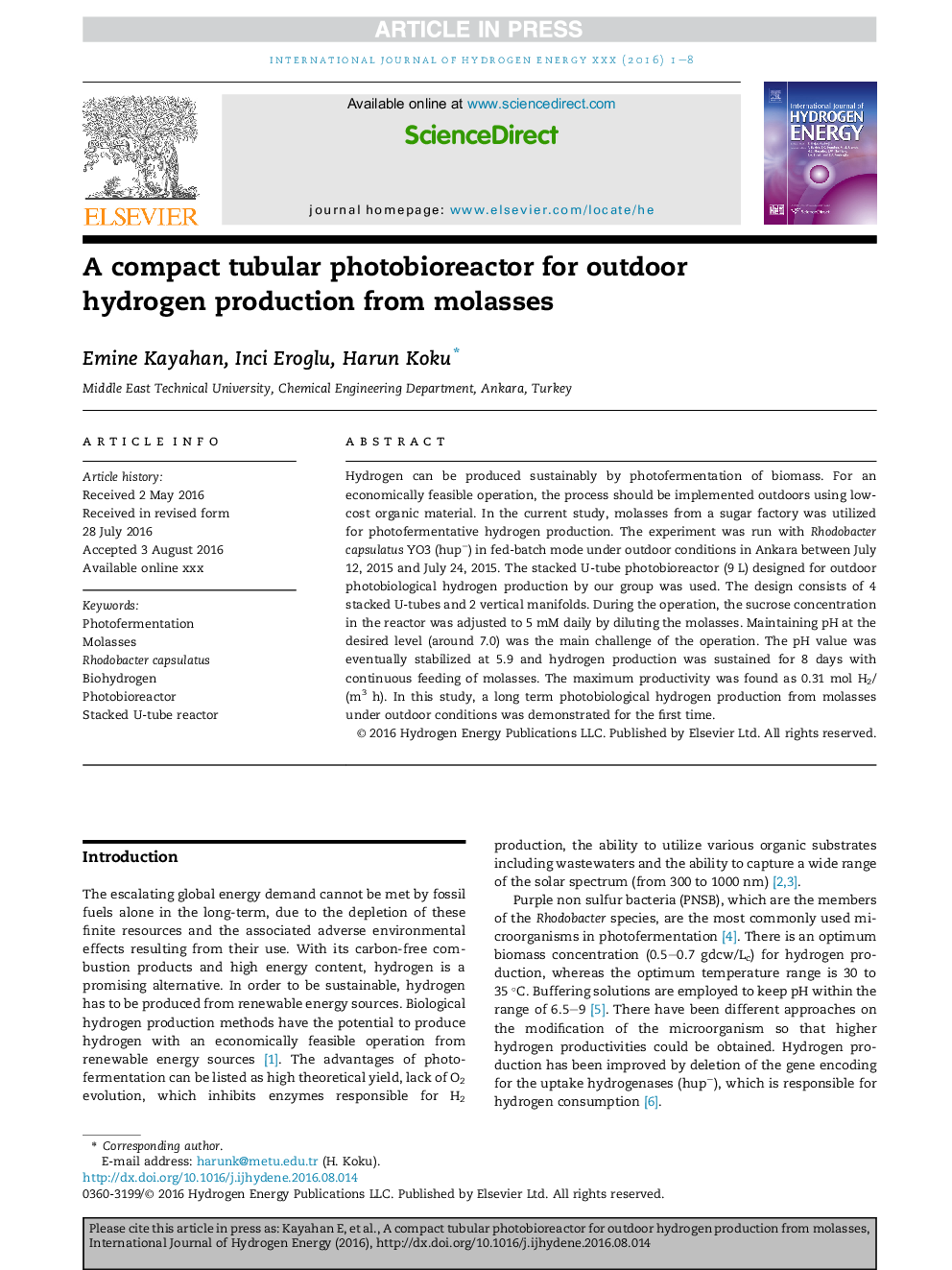| Article ID | Journal | Published Year | Pages | File Type |
|---|---|---|---|---|
| 5146555 | International Journal of Hydrogen Energy | 2017 | 8 Pages |
Abstract
Hydrogen can be produced sustainably by photofermentation of biomass. For an economically feasible operation, the process should be implemented outdoors using low-cost organic material. In the current study, molasses from a sugar factory was utilized for photofermentative hydrogen production. The experiment was run with Rhodobacter capsulatus YO3 (hupâ) in fed-batch mode under outdoor conditions in Ankara between July 12, 2015 and July 24, 2015. The stacked U-tube photobioreactor (9Â L) designed for outdoor photobiological hydrogen production by our group was used. The design consists of 4 stacked U-tubes and 2 vertical manifolds. During the operation, the sucrose concentration in the reactor was adjusted to 5Â mM daily by diluting the molasses. Maintaining pH at the desired level (around 7.0) was the main challenge of the operation. The pH value was eventually stabilized at 5.9 and hydrogen production was sustained for 8 days with continuous feeding of molasses. The maximum productivity was found as 0.31Â mol H2/(m3Â h). In this study, a long term photobiological hydrogen production from molasses under outdoor conditions was demonstrated for the first time.
Related Topics
Physical Sciences and Engineering
Chemistry
Electrochemistry
Authors
Emine Kayahan, Inci Eroglu, Harun Koku,
